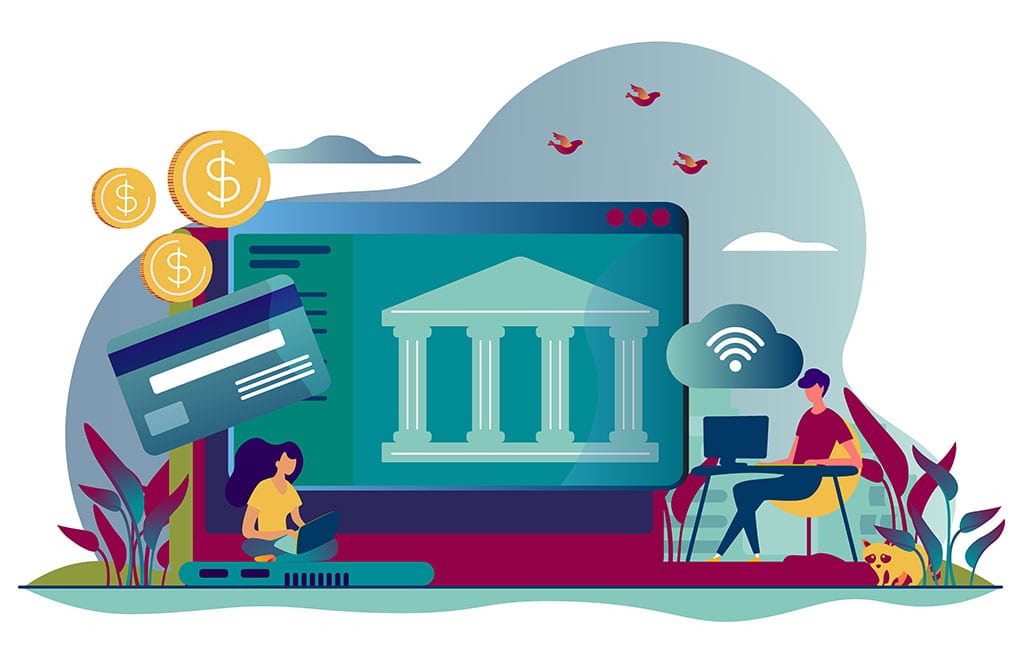How Automated Reconciliations Creates New Opportunities in a Digital Banking Reality
Blog post
Share
As banking and related industries continue to adapt to a new reality in the era of COVID-19, it becomes more evident that digital technologies are the best way forward. In a landscape where changes are commonplace, it is imperative that financial institutions remain current while also anticipating sudden developments, such as changes in the economy or the market.
While manual methods of reconciliation have their place in accounting operations, they do not allow for flexibility in the financial services industry, especially in the midst of a global pandemic.
New Shifts In The Industry Demand New Technology Initiatives
The transition from traditional brick-and-mortar banks to digital banking has been accelerated by unprecedented changes in both the economy and the banking industry. While individuals previously visited a retail bank to make changes to their accounts or answer meaningful questions or concerns, those individuals are now turning to virtual communication methods through the bank’s website or custom app. Not only that, but financial services’ back-offices are seeing a transition to a remote workflow, meaning both the front- and back-office operations are switching to virtual environments.

The switch from on-premises software to a SaaS solution is the first step, as there is an increased need to optimize accountants’ daily workflow so that they are able to work remotely. With spreadsheets and binders, accountants may find themselves rushing the daily reconciliation in order to stay ahead of the reporting financial close. Manual processes not only delay the completion of the close, but they also allow a lack of visibility and a high level of risk of an inaccuracy to go unchecked throughout the entire process. As transactional volume continues to increase, the task of manually reconciling accounts becomes an uphill battle.
The Rise of 3rd Party Payments and Risk Involved
The convenience of online orders has skyrocketed in the midst of the global pandemic. In an effort to ensure safety for customers, businesses have opted to utilize contactless and 3rd-party payment options. And though they were rising in popularity before the pandemic, the usage of person-to-person (P2P) payment providers such as Zelle or Venmo has significantly increased since its impact. In fact, payment transaction through Zelle has already increased by 63% in just the first six months of 2020 alone.
The surge in transaction volume has only intensified the need for automated reconciliation for banking institutions. Traditional, manual methods of transaction matching and account reconciliation only result in inaccurate financial reporting, leading to non-compliance and fraud. Studies have shown that 88% of spreadsheets contain errors.

Additionally, the need for visibility in the account reconciliation process has increased as different methods of payment start to emerge (debit, credit, ACH, check, cash, online, and mobile payments). Higher transaction volumes also raise the risk that reporting deadlines won’t be met due to a larger accounting workload.
Automation Creates More Growth Opportunities
In an era of innovation and digital technology, the switch to financial automation creates more opportunities for growth in financial services. While exclusively using spreadsheets may have been acceptable and achievable in previous circumstances, the need for cloud-based financial software is becoming more prevalent. Moving accountants and financial leaders away from manual processes enable them to prioritize long-term initiatives, like strategizing for growth.
Optimizing Back-Office Operations Gives Competitive Advantages
While digital customer-facing technology has been widely used and is readily accessible, a bank’s back-office accounting operations should be optimized in the same manner. Not only does financial automation software provide benefits for daily accounting tasks, but it also supports the success of the organization as a whole. A cloud-based financial solution offers the ability to assess the organization’s performance through analytics and task management tools. This not only enables financial leaders to gather real-time insights but also streamlines the reporting process following the period-end close.
Real-time insights provide a valuable assessment into how accounting teams are completing the close and create a roadmap that shows where the entire organization is headed, a beneficial resource for financial reporting data. By identifying bottlenecks and imbalances in tasks, banks can leverage the data to empower their organization to operate even better in the future. A bank’s performance impacts everyone involved, from its C-level executives to its customer-facing employees.
As the market warrants a shift to innovative digital technology, it is crucial that banking organizations keep up with the changes in the banking landscape. There are financial automation solutions that can optimize your bank’s back-office accounting workflow. This includes:
- Automated matching solutions that keep your banking organization on top of the constant influx of transactions, as well as highlights any errors, miscalculations, and exceptions
- A streamlined financial close workflow that keeps all accounting personnel on top of the period-end close for your banking organization
- Cloud-based implementation for in-office or virtual work environments
The reliance on outdated methods of reconciliation has left financial professionals within the banking industry struggling to keep up with demands. Learn how to solve four common close problems within the industry by downloading this tipsheet.
Written by: Alex Clem







